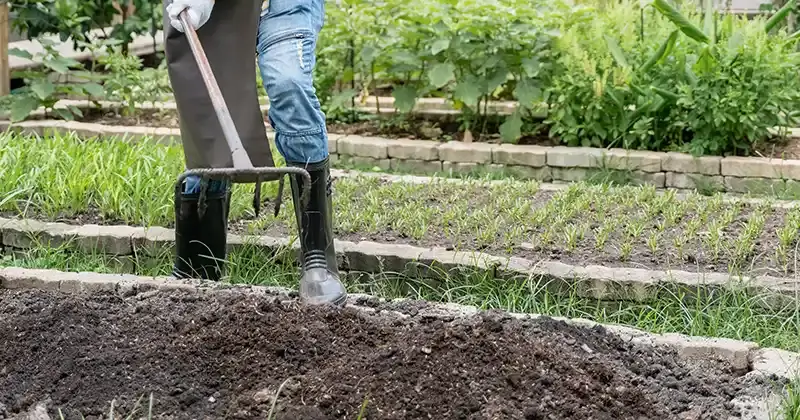If your garden soil seems lifeless, compacted, and unable to support healthy plant growth, don’t worry—there’s a simple, effective way to bring it back to life.
This method will transform poor soil into a thriving, nutrient-rich environment filled with beneficial microbes. By following this step-by-step guide, you’ll create a sustainable, long-term solution for healthy plant growth using a special charcoal enrichment technique.
Why Charcoal?
Charcoal has a unique structure that provides an ideal home for beneficial microbes. Its porous nature allows microbes to settle and thrive for years, continuously improving the soil.
When activated properly, charcoal can become a powerhouse of nutrients, helping plants grow stronger and healthier.
Step 1: Preparing the Charcoal
To start, you’ll need to break down charcoal into smaller pieces. The goal is to create more surface area for microbes to attach to.
You don’t need to grind it into powder, but breaking it into small chunks will enhance its effectiveness.
- Gather a sufficient amount of charcoal.
- Crush it into smaller pieces using a hammer or any heavy object.
- Set it aside in a container for the activation process.
Step 2: Activating the Charcoal with Beneficial Microbes
Now it’s time to infuse the charcoal with microbes that will enrich your soil. This step is crucial in making sure the charcoal serves as a long-term microbial reservoir.
- Place the crushed charcoal into a large 5-gallon bucket.
- Add non-chlorinated water or rainwater. Avoid chlorinated water, as it can kill beneficial microbes.
- Mix in decomposed manure or compost, which serves as the microbial source. This organic material is packed with beneficial bacteria and fungi essential for soil health.
- Stir the mixture well to ensure the charcoal is evenly soaked.
- Cover the bucket loosely with a lid and let it sit for one week. During this time, the microbes will multiply and settle into the charcoal’s porous structure.
Step 3: Preparing the Garden Bed
While the charcoal mixture is activating, prepare the garden bed to receive this powerful enrichment.
- Loosen the Soil: If your soil is compacted, use a shovel to turn it over. This will improve aeration and allow roots to grow more easily.
- Add Organic Matter: Mix in compost to improve soil structure and provide essential nutrients.
- Incorporate Bone Meal: Bone meal is rich in phosphorus and calcium, essential for root development and plant strength.
- Blend Everything Well: Once all amendments are added, mix them thoroughly to create a balanced, nutrient-dense foundation.
Step 4: Applying the Microbe-Enriched Charcoal
After one week, your charcoal mixture will be ready for application.
- Stir the bucket well to ensure everything is evenly combined.
- Spread the microbe-enriched charcoal over the prepared soil bed.
- Mix it lightly into the top layer of soil to help integrate the microbes.
This final step will set up your soil for long-term improvement. The microbes within the charcoal will continue breaking down organic matter, steadily releasing nutrients that nourish your plants season after season.
Why This Method Works
- Long-Term Soil Health: Charcoal acts as a permanent home for beneficial microbes, keeping the soil healthy year after year.
- Better Plant Growth: By introducing a thriving microbial community, plant roots will absorb nutrients more efficiently.
- Sustainable Gardening: Unlike chemical fertilizers, this method improves soil naturally and sustainably, reducing the need for artificial additives.
Final Thoughts
Transforming lifeless soil into a thriving, nutrient-rich environment is possible with this simple charcoal enrichment method.
By taking the time to prepare, activate, and integrate charcoal into your garden bed, you’re setting up a self-sustaining ecosystem that will benefit your plants for years to come.
Give this method a try and watch your garden flourish like never before!
Inspired by this? Share the article with your friends!
